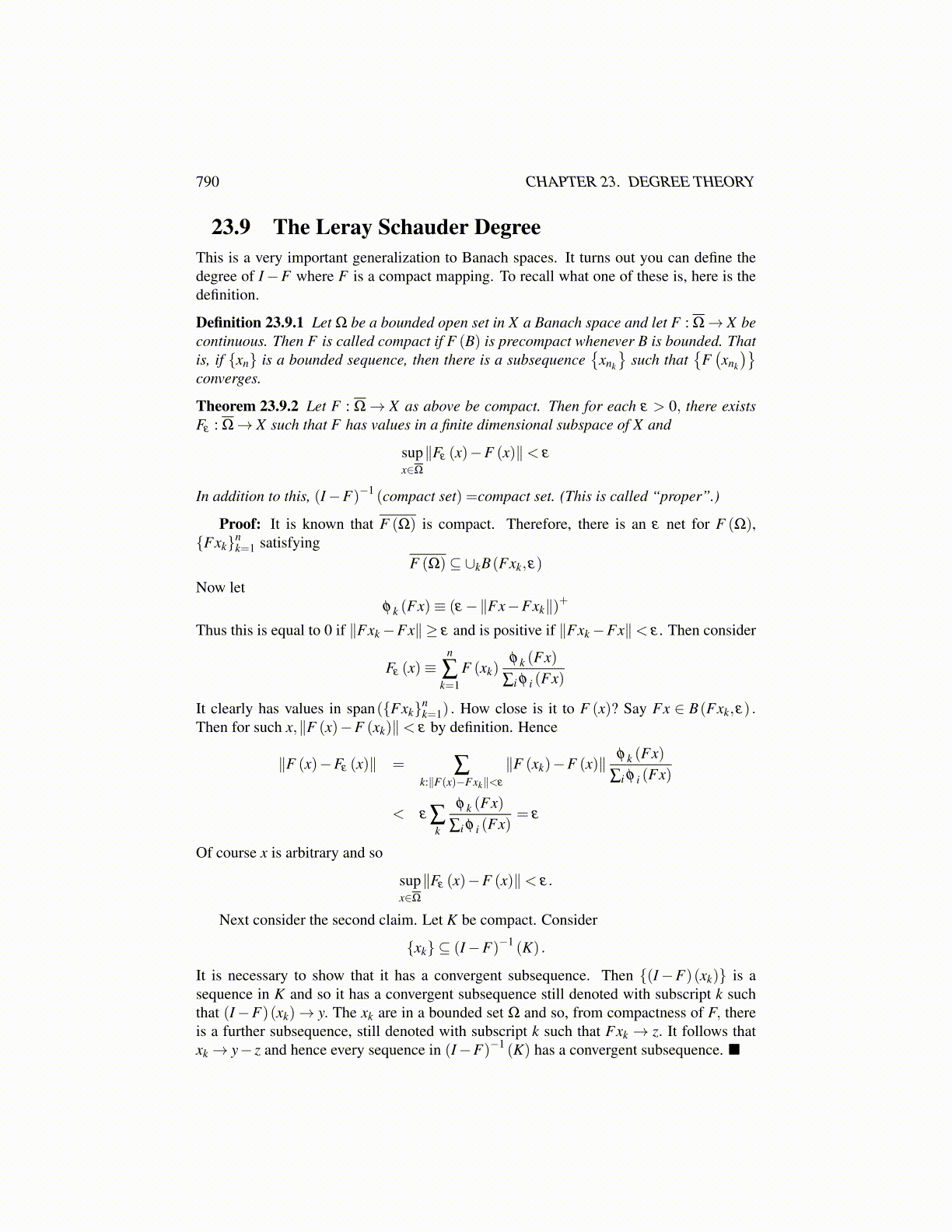
790 CHAPTER 23. DEGREE THEORY
Proof: Letting {v1, · · · ,vm} be a basis for Vm, let a basis for V be
{v1, · · · ,vm,vm+1, · · · ,vn}
Let θ be the isomorphism which satisfies θei = vi where the ei denotes the standard basisvectors for Rn. Then from the above,
d (I− f ,Ω,y) ≡ d(θ−1 ◦ (I− f )◦θ ,θ−1
Ω,θ−1y)
= d(
θ−1 ◦ (I− f )◦θ |
θ−1(Ω)∩Rn
m,θ−1 (Ω)∩Rn
m,θ−1y)
≡ d((I− f ) |
Ω∩Vm,Ω∩Vm,y
).
23.9 The Leray Schauder DegreeThis is a very important generalization to Banach spaces. It turns out you can define thedegree of I−F where F is a compact mapping. To recall what one of these is, here is thedefinition.
Definition 23.9.1 Let Ω be a bounded open set in X a Banach space and let F : Ω→ X becontinuous. Then F is called compact if F (B) is precompact whenever B is bounded. Thatis, if {xn} is a bounded sequence, then there is a subsequence
{xnk
}such that
{F(xnk
)}converges.
Theorem 23.9.2 Let F : Ω→ X as above be compact. Then for each ε > 0, there existsFε : Ω→ X such that F has values in a finite dimensional subspace of X and
supx∈Ω
∥Fε (x)−F (x)∥< ε
In addition to this, (I−F)−1 (compact set) =compact set. (This is called “proper”.)
Proof: It is known that F (Ω) is compact. Therefore, there is an ε net for F (Ω),{Fxk}n
k=1 satisfyingF (Ω)⊆ ∪kB(Fxk,ε)
Now letφ k (Fx)≡ (ε−∥Fx−Fxk∥)+
Thus this is equal to 0 if ∥Fxk−Fx∥ ≥ ε and is positive if ∥Fxk−Fx∥< ε . Then consider
Fε (x)≡n
∑k=1
F (xk)φ k (Fx)
∑i φ i (Fx)
It clearly has values in span({Fxk}nk=1) . How close is it to F (x)? Say Fx ∈ B(Fxk,ε) .
Then for such x,∥F (x)−F (xk)∥< ε by definition. Hence
∥F (x)−Fε (x)∥ = ∑k:∥F(x)−Fxk∥<ε
∥F (xk)−F (x)∥ φ k (Fx)∑i φ i (Fx)
< ε ∑k
φ k (Fx)∑i φ i (Fx)
= ε